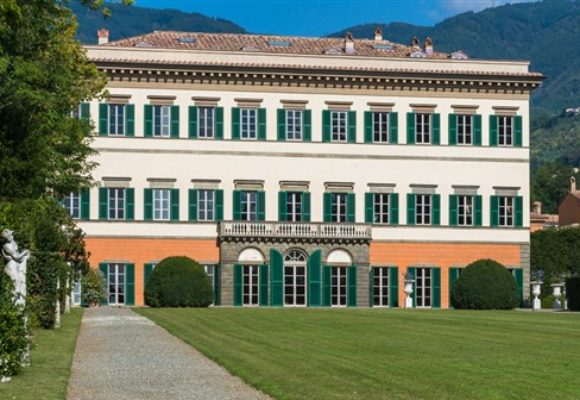


The Royal Villa is a monumental complex located in Marlia, in the municipality of Capannori, in the province of Lucca.

Surrounded by a large park, it is the result of the stratified interventions of the owners over the centuries. As early as Longobard times (9th century) there was a small fort here inhabited by the Duke of Tuscia, later passed to the Avvocati family and then to the Bonvisi family from 1517 until 1651, after their business venture failed in 1629, necessitating the sale of most of the family properties.

The villa was bought by the wealthy Lucchese nobles Olivieri and Lelio Orsetti, who redid the palace and, above all, created a splendid Baroque garden, many parts of which have been preserved, handed down also from an engraving by Venturi. To them we also owe the construction of the "Palazzina dell'Orologio," intended for services and characterized in its main façade by a portico and loggia superimposed, with an elevation in the center where the clock is placed, from which it takes its name. The garden, adorned with water features, nymphaeums, pools, statues and precise geometric symmetries, was finally enclosed by an elegant gate (now destroyed) that stood halfway to the present lawn in front of the villa.
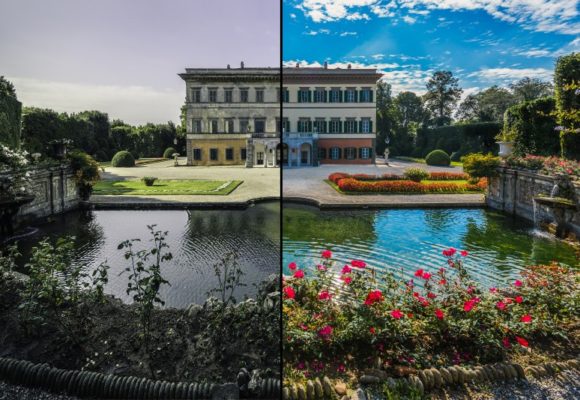
In 1806 the villa and park became the property of Elisa Bonaparte Baciocchi, who obtained it after much pressure on Count Orsetti, who did not want to sell, going so far as to shell out 500,000 (perhaps even 700,000) francs in silver coins.
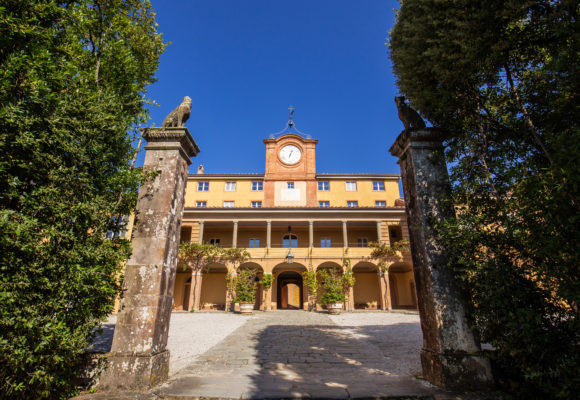
The Queen of Etruria, who gave the villa the name "Royal" because of its presence, purchased the adjacent Villa del Vescovo from the Archbishop's Canteen at the same time, and immediately began the work of renovating and merging the two properties, going so far as to double the lawn in front of the villa to a size at least adequate to the other European courts she had visited.
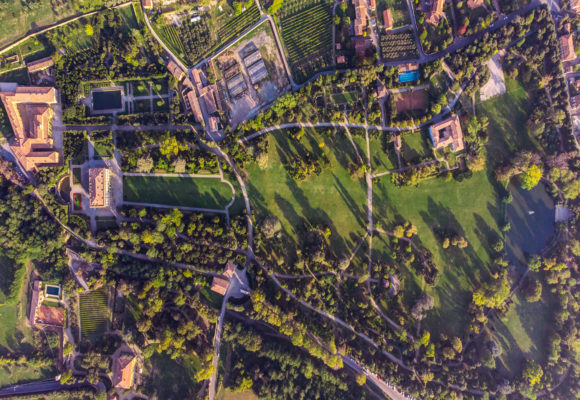
The rearrangement of the park between 1811 and 1814 cost about half a million francs. The park was rebuilt in the English style, which necessitated the demolition of much of the Baroque furnishings, especially in the area of the Bishop's Villa.
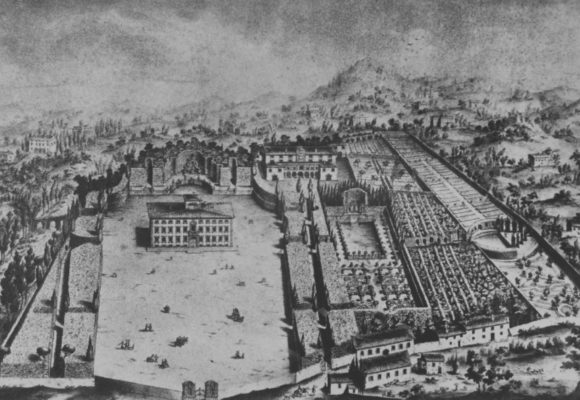
Numerous new essences were planted, scouted in the royal park in Naples by a botanist sent especially for the purpose.
The groves were populated by fallow deer, goats and merino sheep.

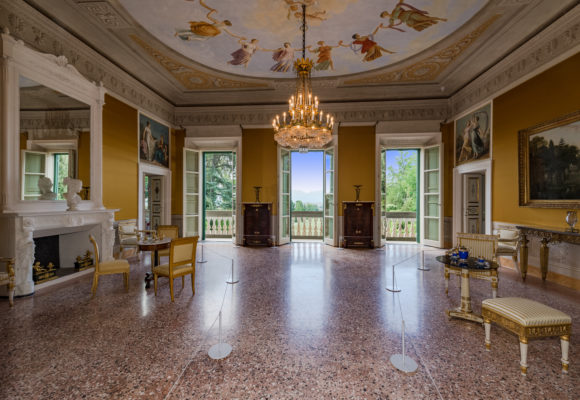
Meanwhile, the late Renaissance palace of the Orsetti was renovated in the neoclassical style, raised by one floor and inhabited by a small but opulent court with the sovereign.
Coordinating the work were architects Giovanni Lazzarini and Pierre-Theodore Bienaimè, who were responsible for the remaking of the facade (with neoclassical cornices instead of ashlar) and the addition of the portico with terrace on the back side.
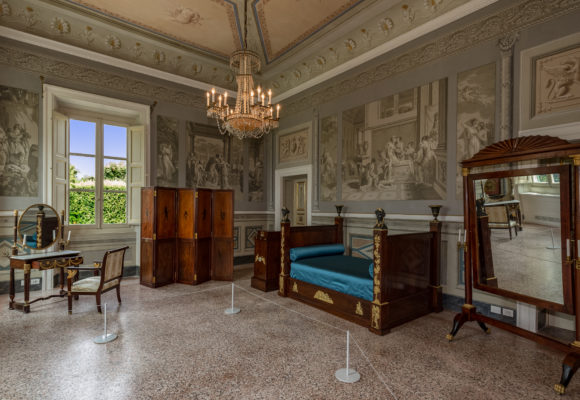
The interiors were also modified during that period, coordinated by Théodore Bienaimé with the intervention of French and Italian painters and plasterers, including Stefano Tofanelli, author of the Dance of the Hours fresco in the large ballroom on the ground floor.
Important guests were invited to enliven court life at the villa, such as Niccolò Paganini, who performed there several times for Élisa. Metternich praised its amenity and the refinement of the English garden.
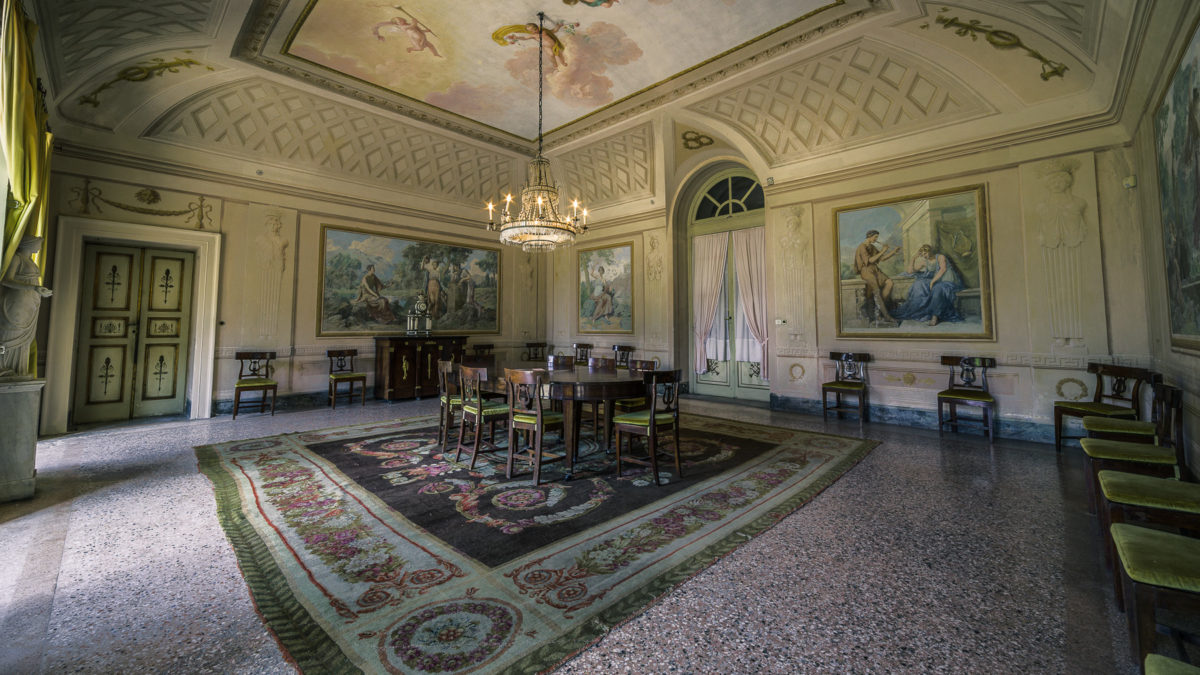
Among the plays that premiered here was Racine's Phaedra.
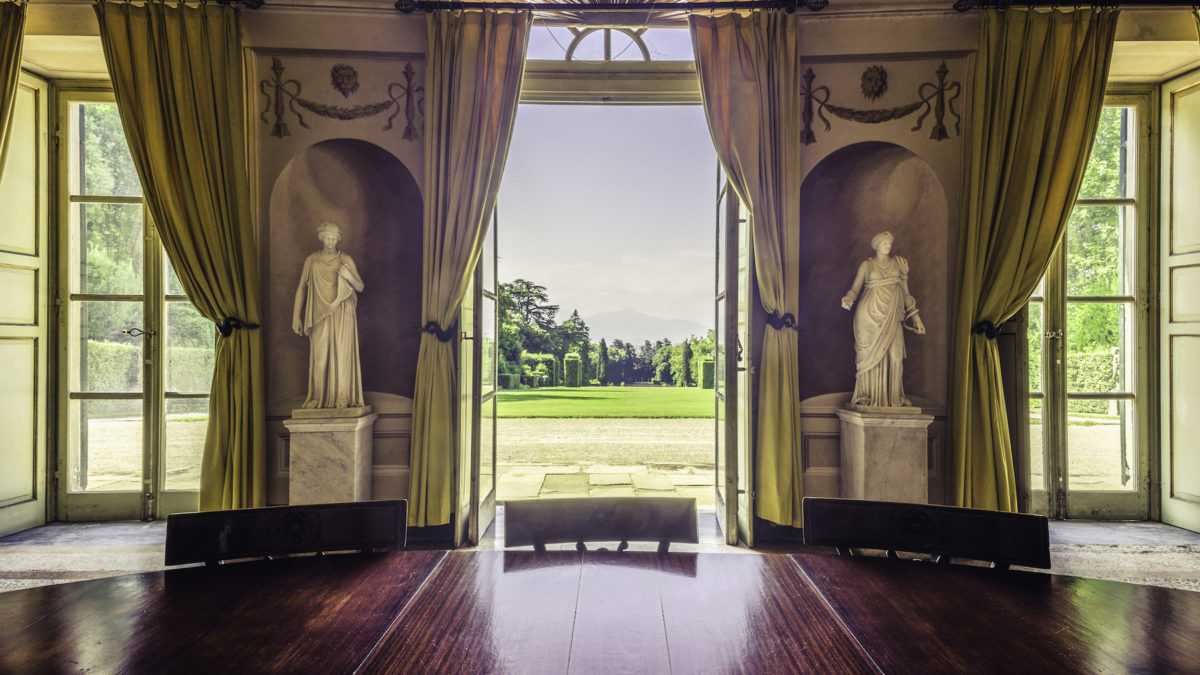
Following the merger of the Duchy of Lucca with the Grand Duchy of Tuscany Elisa, who became Grand Duchess, moved to Florence, but soon preferred to return to Lucca. The villa in Marlia also served as the backdrop for her love affair with Grand Squire Bartolomeo Cenami.

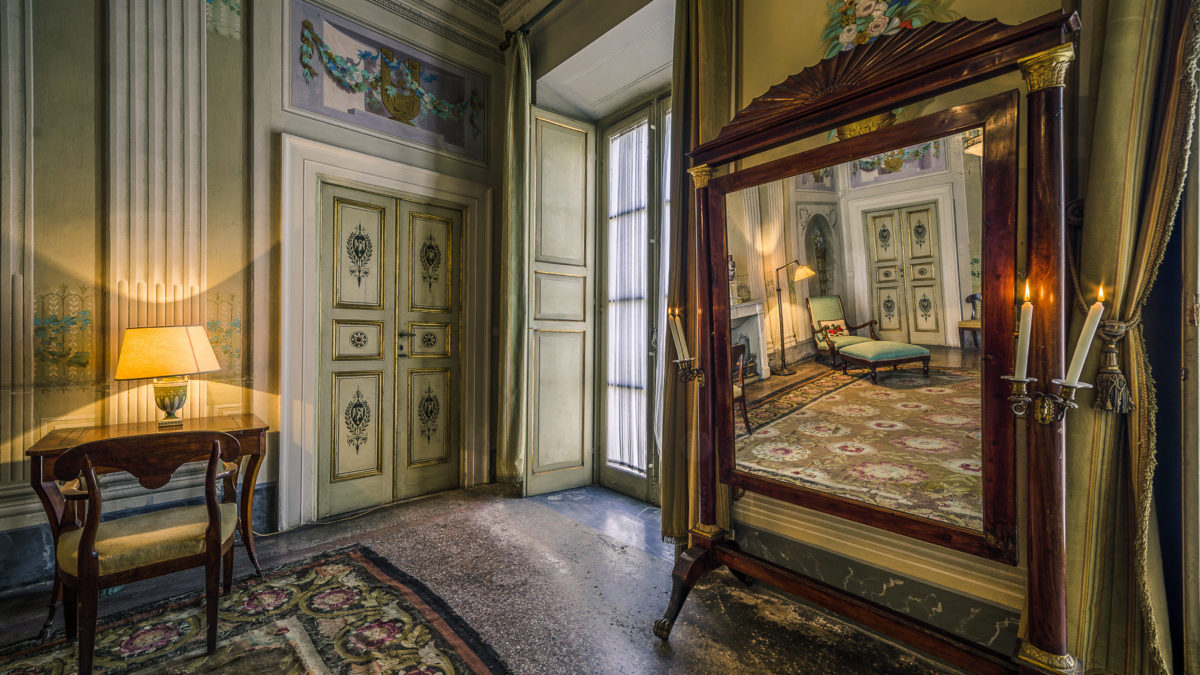
After the fall of Napoleon, Elisa was forced to flee in the ninth month of her pregnancy, driven out by the British troops of Lord William Bentick who told her nakedly that the British crown did not recognize her as the ruler of anything.
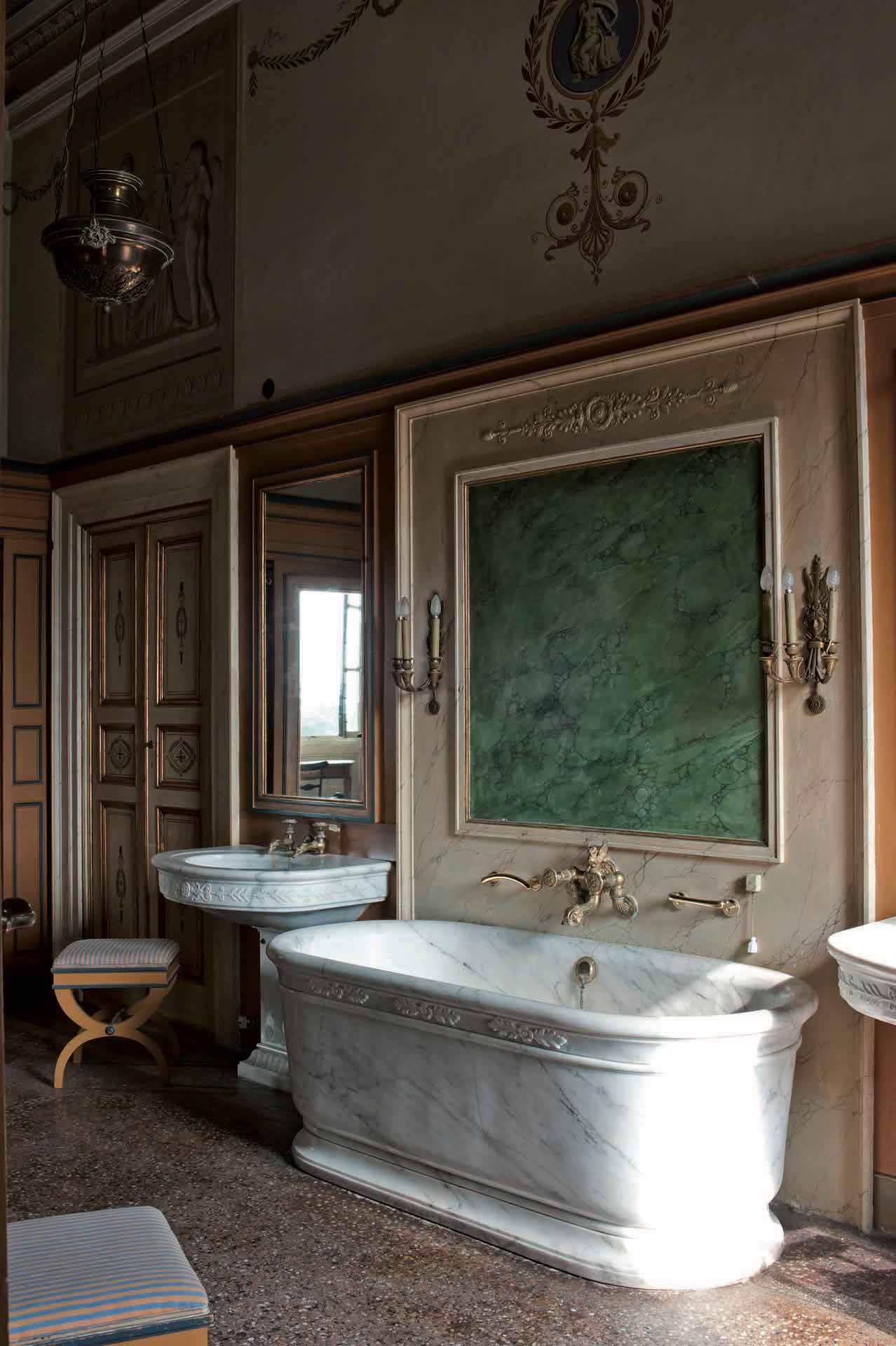
Elisa gave birth in an inn and proceeded to Vienna, where she was also imprisoned.
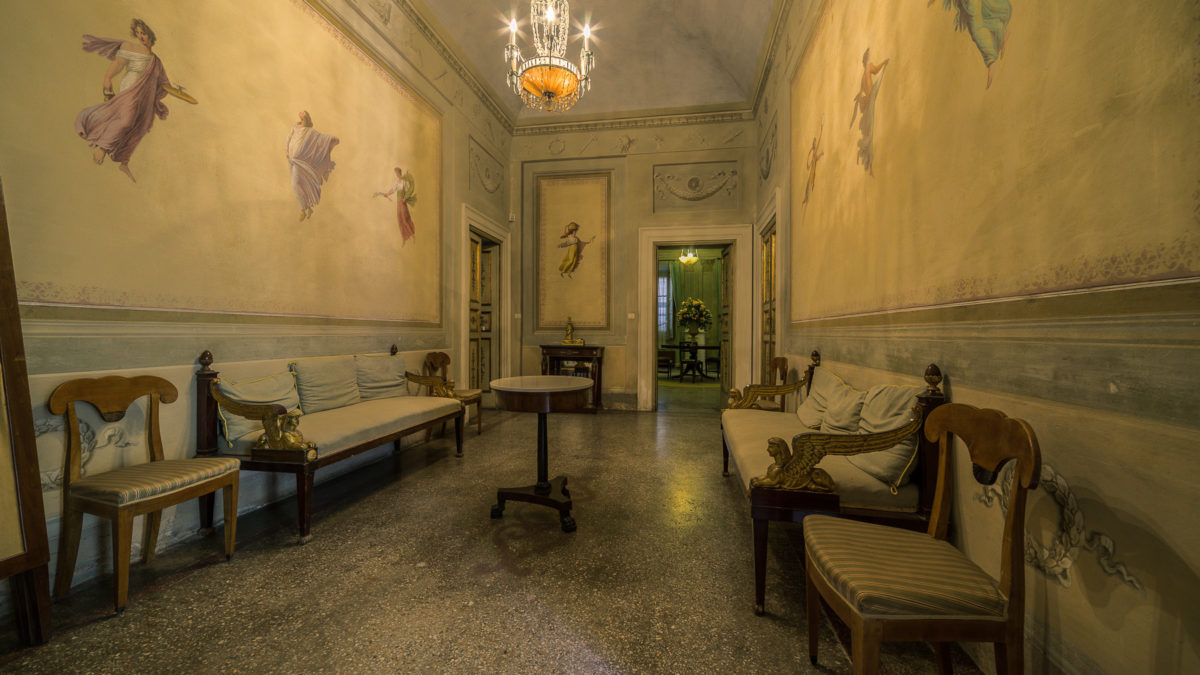
She died forgotten in Trieste in 1820, aged only forty-two.
The villa, plans to reorganize the park having been interrupted, passed to the Bourbon dukes of Lucca: under the new sovereign Maria Luisa the villa was enriched by the architect Lorenzo Nottolini with a Kaffeehaus and the Specola di Lucca, that is, an astronomical observatory, which remained unfinished.

With the passage of the state of Lucca to Tuscany, this villa became the summer residence of the Florentine grand dukes of Habsburg Lorraine, who did not make much of a mark of their presence, except plundering the Lucchese dwellings of valuable furniture to enrich the Florentine royal palaces.

First and foremost is the beautiful bed of the Duke of Lucca that is on display in the Pitti Palace.

Later it entered the patrimony of the Crown of Italy and was destined for the Bourbons of Capua, who remained loyal to the Savoy dynasty. Thus the villa was enriched with books and the correspondence between the Capua and the last Duke of Lucca.
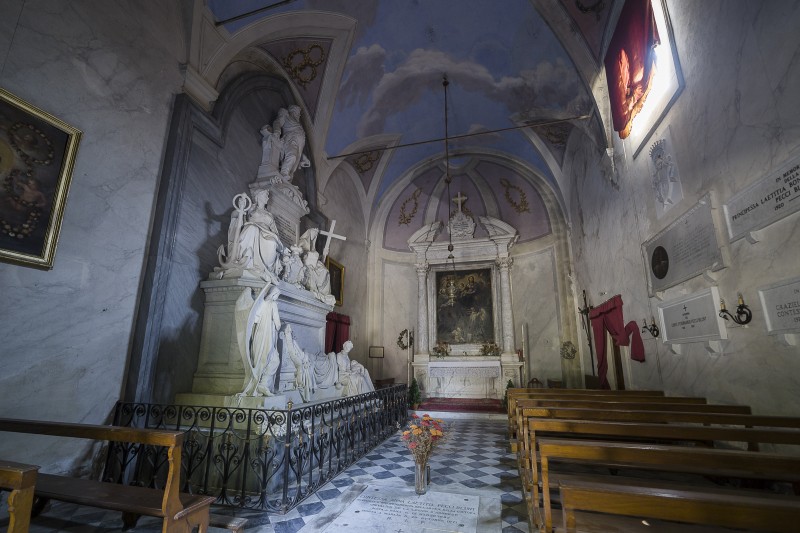
For this reason, the municipality of Capannori intervened to protect the public interest in the auction sale that was made after 1919.

Since 1923 the villa has belonged to the Pecci-Blunt family, which has been responsible for its maintenance and restoration. This Roman family transported the memories of their uncle Joachim Pecci Pope under the name Leo XIII to the clock building. There one can admire the walls covered with books, the postcards of private correspondence, the porcelain with the coat of arms, an ingenious dome-shaped secretaire with a thousand secret compartments that open by moving the frames, and the personal robes, including the red cardinal's robe in 18th-century style in which he had presented himself to his predecessor Pope Pius IX. Museum that would be better enhanced if known.

In 2015 the property was sold by the heirs of the Pecci-Blunt family to a Swiss couple, who, through the real estate agency that handled the negotiations, said they wanted to turn the villa into one of the first extra-luxury hotels in Italy.
Villa Reale di Marlia
Address: Via Fraga Alta, 2, 55014, Marlia
Phone: 0583 30108
Site:
https://villarealedimarlia.itLocation inserted by
Bonometti Paola